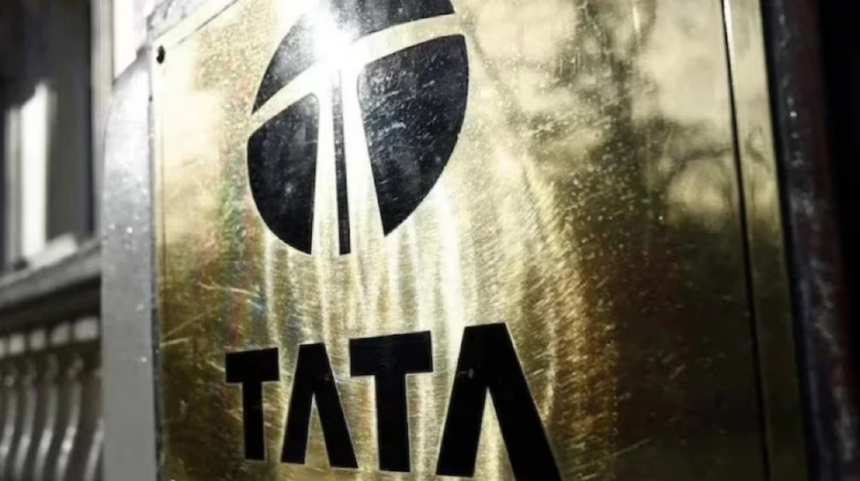Tata Group will establish an Outsourced Semiconductor Assembly and Test (OSAT) facility through Tata Electronics Private Limited (TEPL), a greenfield enterprise with expertise in precision component production.
- SUMMARY
- Tata Group enters the semiconductor ecosystem with a Rs 40,000 crore OSAT application through Tata Electronics, a greenfield enterprise.
- Assam Chief Minister Himanta Biswa Sarma confirmed the development, noting that the company has shortlisted Assam for its OSAT factory.
- Tata Electronics will establish an electronic center in Jagiroad, Assam, and would train 1000 Assamese youth.
A year after Tata Sons Chairman Natarajan Chandrasekaran revealed the company’s plans to enter the semiconductor market, the company has submitted an application for the establishment of an Outsourced Semiconductor Assembly and Test (OSAT) facility in Assam with a Rs 40,000 crore investment. Himanta Biswa Sarma, Assam’s chief minister, acknowledged the development on social media platform X (previously Twitter).
Tata Group will establish an Outsourced Semiconductor Assembly and Test (OSAT) facility through Tata Electronics Private Limited (TEPL), a greenfield enterprise with expertise in precision component production. OSAT units, also known as assembly, testing, marking, and packing (ATMP) units, serve an important role in semiconductor manufacturing by packaging and testing silicon chips produced at foundries before they are distributed to the market. Randhir Thakur was appointed as the Chief Executive Officer and Managing Director of Tata Electronics Pvt. Ltd. (TEPL) in April of this year. The email to Tata Electronics confirming the development of the OSAT application received no response.

Minister Sarma, on the other hand, claimed in a video on X, “One good news for us that will change the environment of Assam a lot is that Tata Electronics Limited has submitted an application before the government of India to set up an Electronic Centre at Jagiroad.” They have submitted a proposal to the Indian government with a budget of Rs 40,000 crore. There will be semiconductor assembly and packaging, and after approaching the Assam government, they are satisfied with our discussions and have applied to the government of India.”

He further stated that Tata has already informed the Assam government that whether or not an industry is established, the corporation will require 1,000 Assamese youth. “And, in preparation for that industry, they are already training 1000 youth so that, if the industry exists, they can bring trained laborers and deploy them.”We’ve also been told that it has a lot of potential, that it requires a lot of manpower, and that it’s a labor-intensive industry.”

The news comes months after Assam’s state government passed the Assam Electronics (Semiconductor, etc.) Policy 2023, in which the state competes with three other states—Uttar Pradesh, Gujarat, and Orissa—that have also implemented semiconductor state policies.

Believing that Tata’s OSAT factory will revolutionize the entrepreneurial environment in the state, the Assam administration is also in contact with the government of India to ensure that the project is approved as soon as possible. The minister is optimistic that he will hear good news within the next one and a half months.

Independent semiconductor expert Arun Mampazhy comments on this issue, saying, “If Tata has indeed submitted a Rs 40,000 crore chip packaging unit (OSAT) proposal, it will have a collateral impact.” Smaller applicants may find it more difficult to obtain approval and, even if accepted, to obtain orders. In addition, Micron would receive Rs 12,000 crore and Tata would receive Rs 20,000 crore, representing half of the Rs 76,000 crore incentive. If the Indian government is serious about establishing silicon fabs, the overlay will need to be increased.”

Global semiconductor sales is expected to exceed $1 trillion by 2030, with India striving to become a key trusted and trustworthy semiconductor value chain participant over the next decade. The government has provided a financial incentive of Rs 76,000 crores in December 2021 to encourage this. In June of this year, the government of Gujarat authorized Micron’s ATMP unit valued $2.7 billion. Other Indian conglomerates, such as Anil Agarwal’s Vedanta and Hiranandani Group, are interested in entering the semiconductor manufacturing business.
Click here, to check out the latest post on Instagram.
Also read: Adani Total Gas Shares Have Increased 110% In One Month; What’s Next On The Technical Charts?
image source: google




































